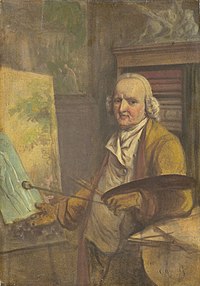
Rijksmuseum Amsterdam
Jurriaan Andriessen (12 July 1742 – 31 July 1819) was a Dutch decorative painter and graphic artist.

Jurriaan Andriessen (12 July 1742 – 31 July 1819) was a Dutch decorative painter and graphic artist.
Andriessen was born and died in Amsterdam. His father was from Brandenburg and his mother was from Holstein. He began his art studies at the age of twelve with the decorative painter Anthony Elliger. Four years later, he worked with Jan Maurits Quinkhard. [1] In 1760, he attended the Technical School in Amsterdam and was awarded first prize for his graduation work in 1766. That same year, he was accepted as a member of the Guild of Saint Luke and received a major order for wall decorations at the Huis te Manpad in Heemstede.
He worked with Johannes van Dreght and Reinier Vinkeles. In 1770, he was married. The couple settled in Amsterdam, where he and Izaäk Schmidt opened a workshop for making painted wallpaper. [2] His brother Anthonie, who was a carriage painter, also became involved in the business. Idyllic, mythological landscapes were his most popular product. Toward the end of the Eighteenth-century, the interest in painted wallpaper declined, so he joined with Hermanus Numan to paint theatrical scenery; most notably for the Schouwburg of Van Campen. [2]
In addition, he was a notable teacher, whose students include Jan Bulthuis, Jacques Kuyper, Gerrit Jan Michaëlis, Jacobus Schoemaker Doyer, Wouter Johannes van Troostwijk and Johann Georg Ziesenis as well as his son, Christiaan. [1]
In 1799, he suffered a stroke that left him partially paralyzed. In all, he produced over 200 wallpaper designs, many of which are in the collection of the Rijksmuseum. Very few are still to be seen in their original locations. The museum also has his diary, meticulously kept over the course of twenty years.

The Hague School is a group of artists who lived and worked in The Hague between 1860 and 1890. Their work was heavily influenced by the realist painters of the French Barbizon school. The painters of the Hague school generally made use of relatively somber colors, which is why the Hague School is sometimes called the Gray School.
Andriessen is a Dutch patronymic surname meaning son of Andries cognate to the surnames Andrews and Anderson. People named Andriessen or Andriesse include:
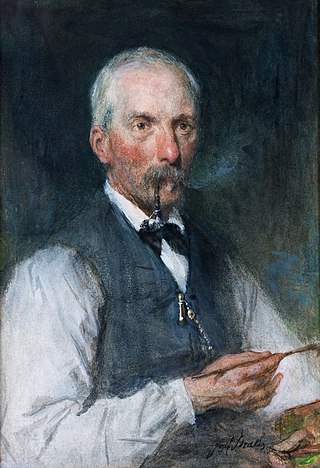
Jan Hendrik Weissenbruch, also known as Hendrik Johannes Weissenbruch was a Dutch painter of the Hague School. He is noted especially for his watercolours.
Events from the year 1742 in art.
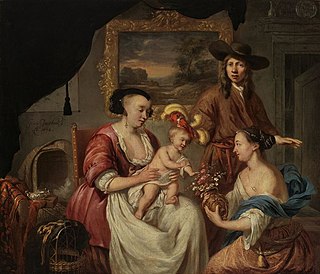
Johannes Voorhout was a Dutch painter of history paintings, portraits and genre scenes. After training in the Dutch Republic he worked for a number of years in Hamburg before returning to work in Amsterdam.

Jan Baptist Xavery was a Flemish sculptor principally active in the Dutch Republic. He produced portrait busts, large scale statues for residences and gardens, church furniture, wall decorations, tomb monuments as well as small scale statuettes in boxwood, lime wood, ivory and terracotta. The latter were made for elite collectors who liked to admire such objects in the privacy of their homes. He worked on various projects for William IV of Orange-Nassau, the Prince of Orange who later became the Stadtholder. He is regarded as the leading sculptor active in the Dutch Republic in the first half if the 18th century.

Wybrand Hendriks was a Dutch painter, primarily known for his portraits, and the concierge of the Teylers Museum.
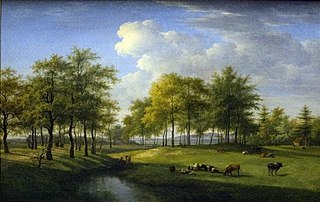
Gerrit Jan Michaëlis, was a painter from the Netherlands.
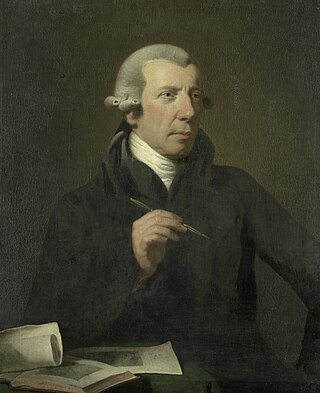
Reinier Vinkeles was an 18th-century painter and engraver from the Northern Netherlands, who was the teacher of several talented artists.
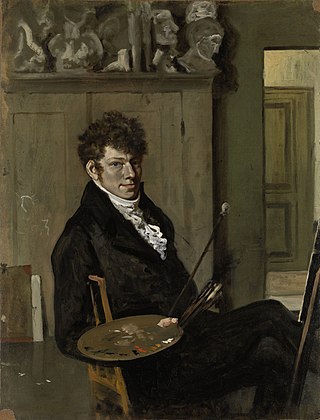
Wouter Johannes van Troostwijk was a Dutch painter and etcher. Most of his works are landscapes or cityscapes.

Johannes Hermanus Koekkoek was a Dutch painter and draughtsman.

Hendrik Voogd was a Dutch painter and printmaker, who was active in Italy.

Jan van Logteren, was an 18th-century draftsman and sculptor from the Northern Netherlands.

Jan Bulthuis was a Dutch draftsman and painter.

Hermanus Numan was a Dutch painter, draftsman, pastellist, etcher, engraver, watercolorist, set painter, decorator (interiors), art theorist, and publisher.

Maria Machteld van Sypesteyn (1724–1774) was a painter from the Netherlands.

Jan Gildemeester Jansz. was a Dutch art collector.
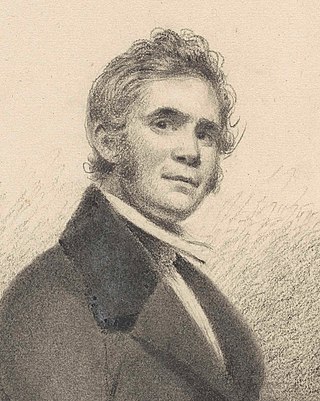
Jacobus Schoemaker Doyer, or Schoenmaker Doijer was a Dutch painter, primarily of genre and historical scenes.

The Art Gallery of Jan Gildemeester Jansz is a painting created by the Dutch painter Adriaan de Lelie in 1794–95. It is part of the collection of the Rijksmuseum Amsterdam, executed in oil paint on panel. It depicts the art collector Jan Gildemeester Jansz in the midst of his large collection of paintings, showing them to friends.

The Bloemgracht is a canal in the Jordaan district of Amsterdam, the Netherlands. It connects the Prinsengracht with the Lijnbaansgracht and runs between and parallel to Nieuwe Leliestraat and Bloemstraat in the Amsterdam-Centrum district. The canal is named after the bulwark "de Bloem", later called "Rijkeroord". From 1614 a windmill was located here, but it was moved to Haarlemmerweg in 1878.